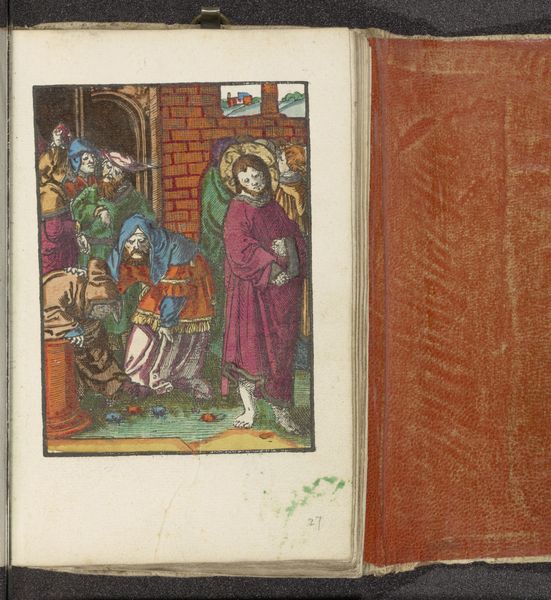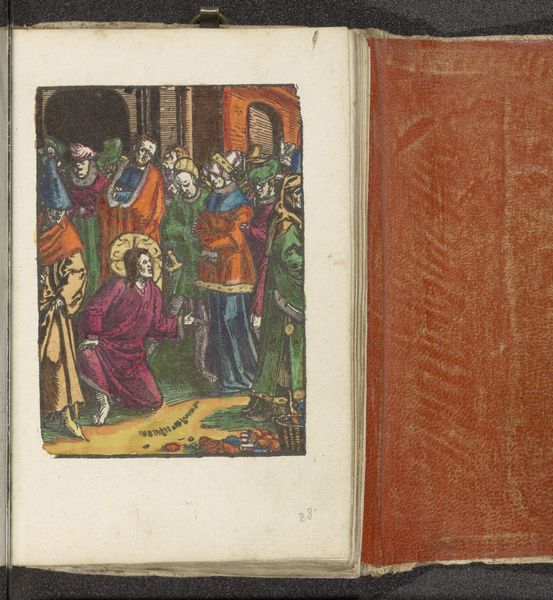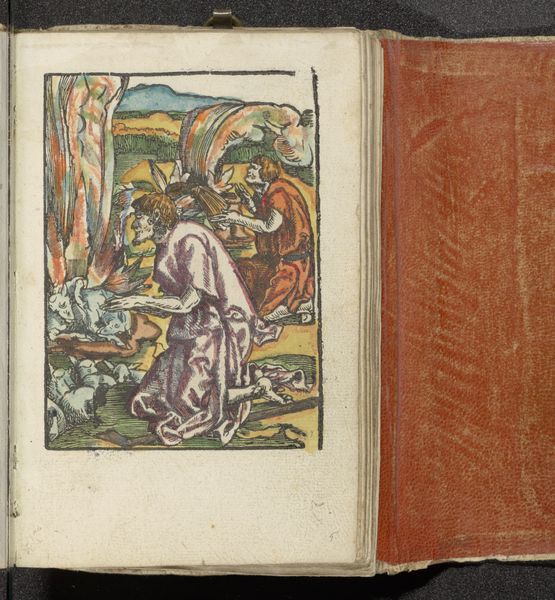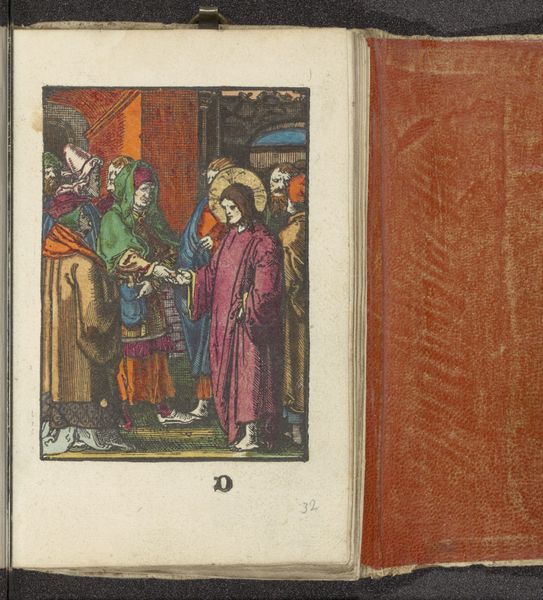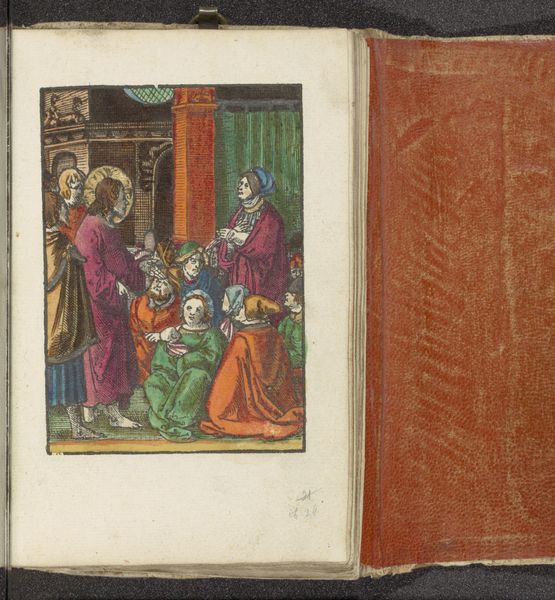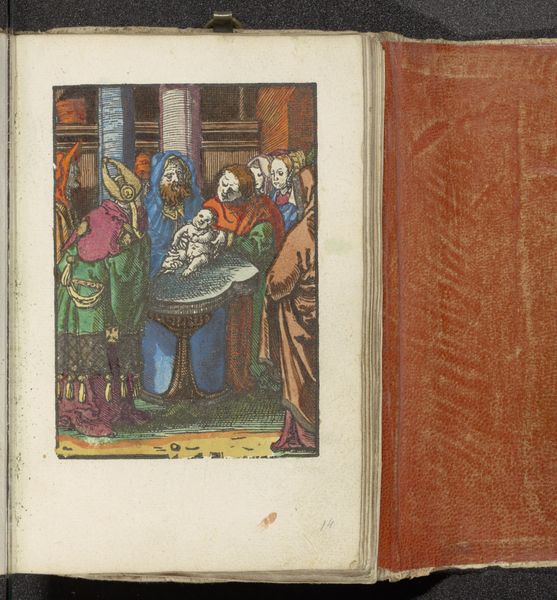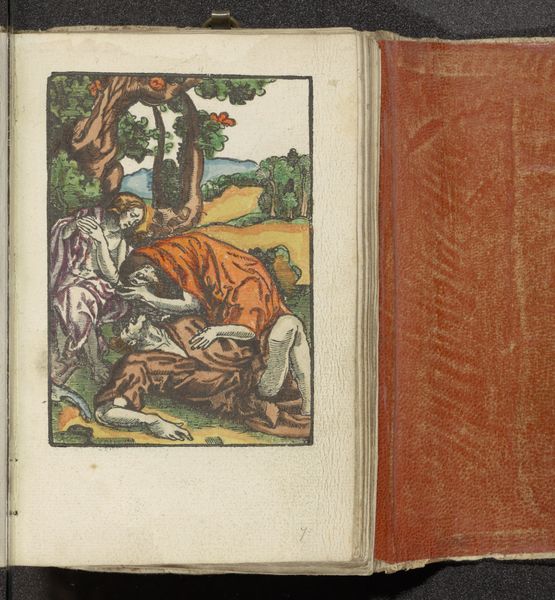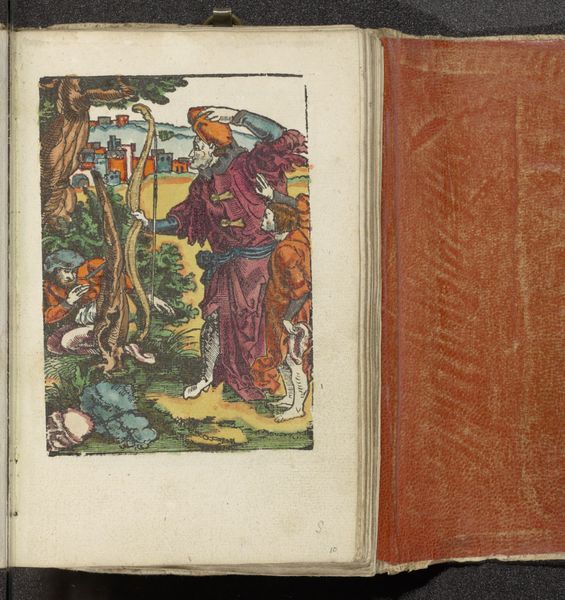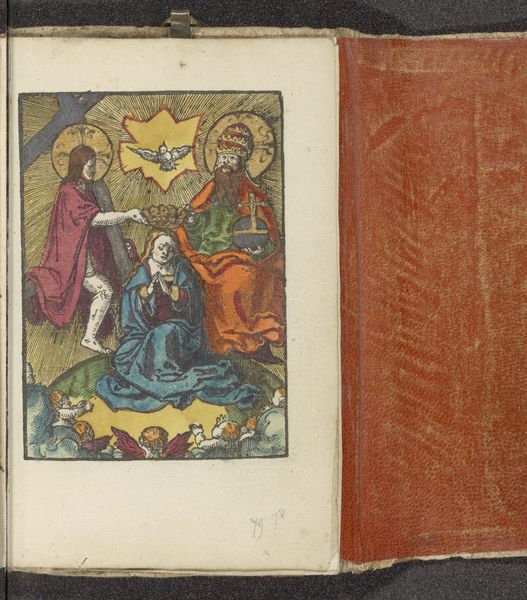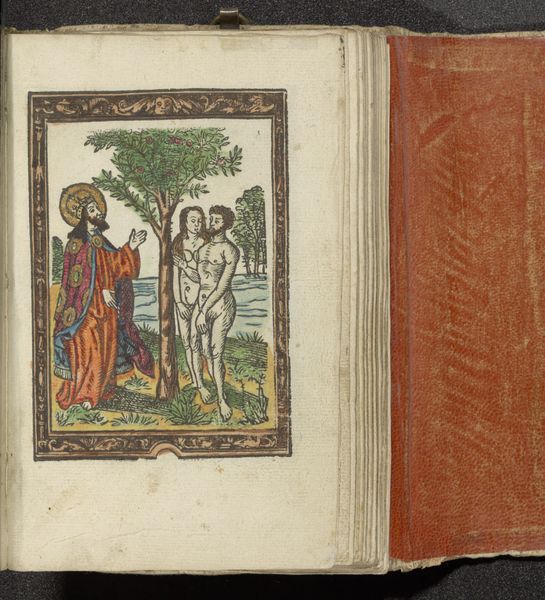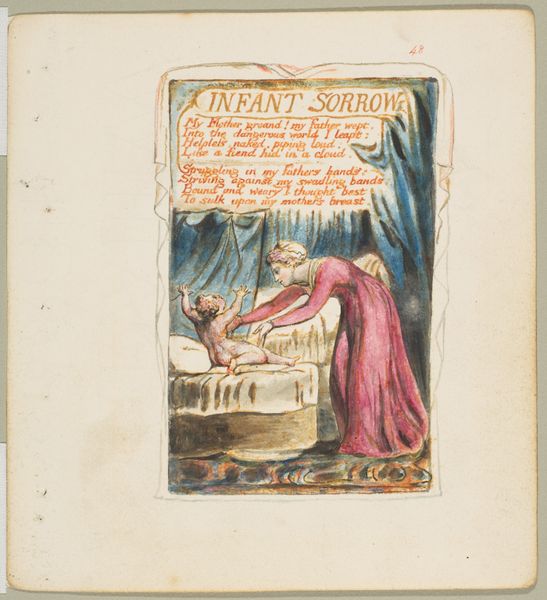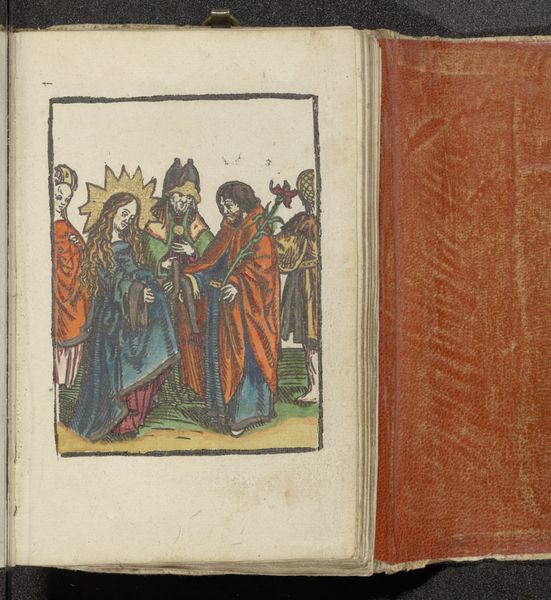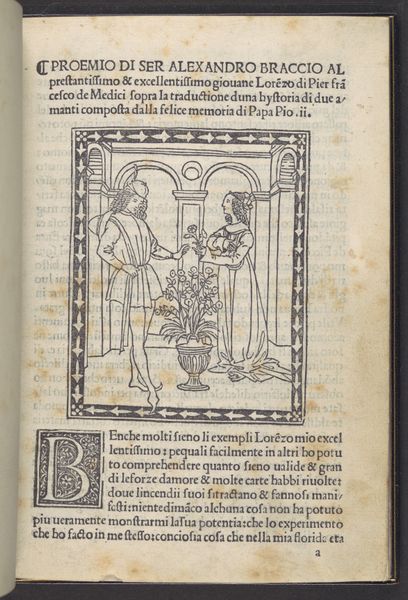
print, ink, woodcut
#
narrative-art
# print
#
landscape
#
figuration
#
ink
#
coloured pencil
#
woodcut
#
italian-renaissance
Dimensions: height 112 mm, width 78 mm, height 159 mm, width 101 mm
Copyright: Rijks Museum: Open Domain
Curator: Lucas van Leyden’s “Christ and the Samaritan Woman,” created around 1530, invites us to consider not only a biblical scene, but also the physical and social landscape in which such images were produced and circulated. Editor: It strikes me as a rather subdued depiction. The colors, despite being applied later, give it almost an antique feeling. There’s a strong sense of place, and these figures almost blend with their surroundings. What sort of symbolic significance did you detect? Curator: Consider the material itself – this isn't a unique painting but a woodcut, one of many prints. It speaks to a rising mercantile class with increased access to imagery and texts. The landscape setting, the garments – everything would have been fashioned and experienced in early 16th-century society. This is about production and consumption. Editor: The well, of course, immediately signals refreshment, a vital resource. But more profoundly, in the context of this biblical encounter, the well represents a deeper spiritual thirst. Jesus offers living water, an eternal kind of sustenance. And the presence of other figures watching from afar – their expressions obscured but noticeable - add layers to a narrative already pregnant with hidden meanings. Curator: Absolutely, the very act of making multiple copies from a single block parallels the dissemination of the Gospels themselves. Van Leyden isn’t just creating art, he’s participating in the Reformation, and perhaps influencing widespread cultural change through reproducible imagery, effectively mass-producing meaning. Editor: A beautiful parallel. Beyond the readily recognizable biblical symbolism and spiritual fulfillment, water can cleanse; in this scenario, it signifies purification, a fresh start. Also consider the well as the place of encounters - an appropriate arena for Christ’s revolutionary pronouncements about worshipping God in spirit and in truth, which breaks societal norms and ethnic boundaries of the time. Curator: So the commodification of religious narrative facilitates ideological reform. The marketplace and the sacred become deeply intertwined within these affordable, mass-produced prints. Editor: Precisely. Gazing at this small woodcut, layered with artistic symbolism and embedded in cultural context, you are truly drinking from a very deep well, no? Curator: Yes, reflecting on process and context has changed the way I view the impact of this print.
Comments
No comments
Be the first to comment and join the conversation on the ultimate creative platform.
